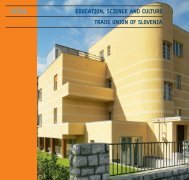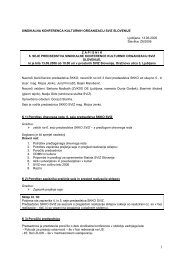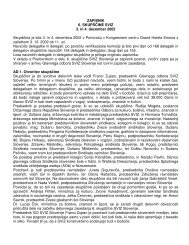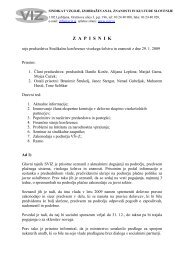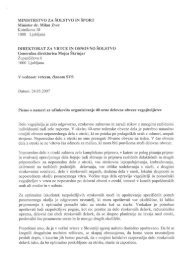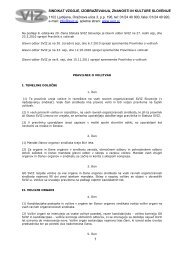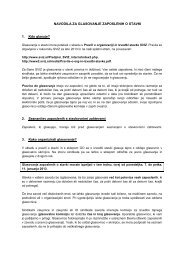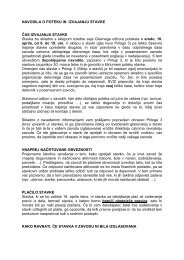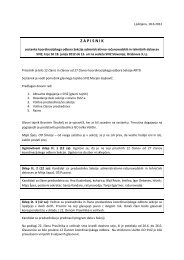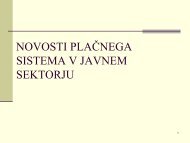You also want an ePaper? Increase the reach of your titles
YUMPU automatically turns print PDFs into web optimized ePapers that Google loves.
Kats-Chernin’s music is often derived from simple thematic material or musical<br />
formulas and ideas; the initial, intuitively selected impulse is followed by a<br />
treatment of the musical material, which from its starting point develops on<br />
entirely new paths. The composer places particular emphasis on the research<br />
of sound and musical texture. The six Re-Inventions for baroque bassoon and<br />
strings (originally for recorder and strings) came about in 2005 on the basis<br />
of an impulse sparked by Bach’s two-part inventions. Bach’s compositions<br />
became the starting point for musical works that have a different sound and<br />
a different structure from the originals. Re-Invention No. 1 is derived from<br />
Bach’s Invention No. 8 in F Major, and transforms the original composition<br />
into a genuine waltz. Re-Invention No. 2 (from Invention No. 4 in D Minor)<br />
is fragile, slow and hypnotic; in it scales rise and fall above two alternating<br />
chords. Re-Invention No. 3 is based on Invention No. 13 in A Minor, which is<br />
characterised by a relentless motoric energy; the basis for the main material<br />
is here provided by repeating patterns in the violas and cellos.<br />
Giuseppe Tartini, born in Piran, was one of the most famous violinists and<br />
musical theoreticians of his time. Pupils from all over Europe flocked to his<br />
violin school in Padua. As a composer he was above all a master of the sonata,<br />
which he frequently transformed into a stage for virtuosity. Particularly in his<br />
chamber sonatas (sonate da camera) he distanced himself from the established<br />
forms derived from the suite. His works surprised his contemporaries<br />
with their expressive power and affectation, as well as with their daring harmonies.<br />
For Tartini the point of music was not “simple emotional pleasure, but<br />
rather the excitement, intensification and calming of affections with notes”.<br />
The famous violin sonata with the <strong>program</strong>matic title ‘The Devil’s Trill’ was<br />
already well known before 1750, but it was only published posthumously in<br />
1798 in Paris. It got its name from dreams in which Tartini apparently heard<br />
the devil playing the violin; when he woke up he tried to notate the ‘devil’s’<br />
melody, or trill. Although the devil’s trill appears only in the last movement,<br />
the entire sonata is spiced with ‘devilishly’ difficult trills. With its characteristic<br />
dotted rhythms and the pastoral atmosphere of a siciliano, the opening Larghetto<br />
is the calm before the storm of the energetic and pugnacious Allegro. A<br />
short, slow Grave introduces the concluding and technically virtuosic Allegro,<br />
in which the sonata proves to be worthy of its name: the leading melody is<br />
accompanied by numerous grace notes and trills on other strings. The short<br />
slow interludes are only a breathing space and preparation for the final virtuosity<br />
of the solo cadenza, where the cult of virtuosity already heralds the cult<br />
of the virtuoso, with which Paganini was to be crowned a few decades later.<br />
PROGRAM / PROGRAM<br />
Katarina Šter<br />
Prevod / Translation: Neville Hall<br />
83



